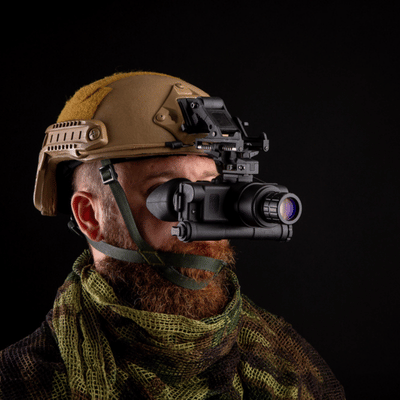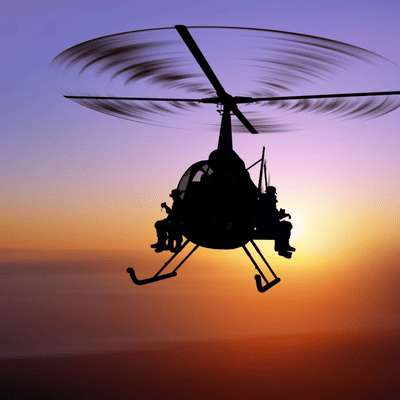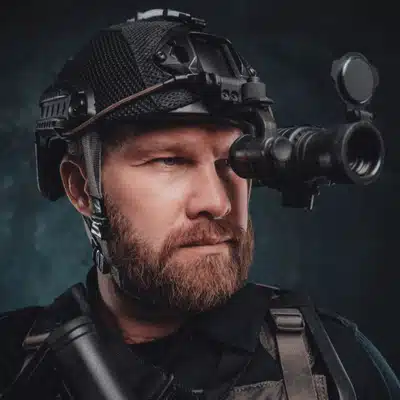Seeing in the dark takes more than just good equipment. Your night vision range depends on several key factors working together. Understanding these elements helps you get the most from your gear.
Understanding Night Vision Technology

Night vision devices turn darkness into visible images through light amplification technology. The process starts when an objective lens gathers dim light and some infrared light. This light hits a photocathode that converts photons into electrons.
These electrons move through microchannel plate technology where they multiply thousands of times. The amplified signal then strikes a phosphor screen that glows and creates the green image you see. This image intensifier process can boost light by 30,000 times or more.
Digital night vision works differently. These devices use image sensors to capture and enhance low light images. They often need an IR illuminator in complete darkness. While digital night vision offers features like video recording, traditional image intensifier tubes still provide better performance in very low light.
Thermal vision detects infrared radiation from heat instead of amplifying light. These devices work in total darkness by spotting warm objects. The military and law enforcement use thermal vision for detection, but it lacks the fine detail of night vision goggles.
Generation Levels and Their Capabilities
Gen 1 devices were the first practical systems. They produce grainy images with light gain around 1,000 times. You can detect objects at roughly 100 to 200 meters under good conditions.
Gen 2 introduced better infrared amplification for improved performance. These devices amplify light up to 20,000 times. Your detection range improves to 200 to 300 meters with clearer images.
Gen 3 represents the current gold standard for military and aviation night vision applications. Using a Gallium Arsenide photocathode for superior light sensitivity, these generation levels amplify light 30,000 to 50,000 times. You can detect objects at 300 to 600 meters under starlight and up to 1,000 meters under moonlight. Gen 3 also delivers the best resolution at 64 line pairs per millimeter or higher.
Recognition range differs from detection range. Night vision goggles let you identify what you’re seeing at much greater distances than older models. Better image clarity and higher light spectrum response mean sharper details at range.
Key Factors That Affect Viewing Distance
Ambient Light and Darkness

Lighting conditions matter most for traditional systems. More available light means farther viewing ranges. A clear night with bright moonlight pushes Gen 3 goggles near maximum range. But heavy cloud cover blocks starlight and can cut your range in half.
In extreme darkness, you’ll need an IR illuminator. These devices emit infrared light invisible to the naked eye. An IR illuminator extends your distance when natural light fails. However, the beam can give away your position to anyone else with night vision capabilities.
Light pollution from distant cities can actually help your devices work better. Even faint sky glow provides light for your image intensifier to amplify.
Weather and Environment
Weather conditions directly impact visibility conditions. Fog, rain, and snow scatter light and reduce your viewing ranges. Heavy fog can white out your image with scattered light. Haze, dust, and smoke also shorten camera range distance by reducing object contrast.
Target and Object Factors
Larger objects show up farther away than small ones. A vehicle appears at greater range than a person. This affects both your camera range distance and recognition range for different targets.
Your ability to identify camouflaged targets drops significantly. You might see something at 500 meters but not identify it as a person until 300 meters if it blends with the background.
Device Specifications That Matter
Device Specifications That Matter
Key Features That Determine Night Vision Performance
Resolution
High resolution reveals more detail at distance. Gen 3 offers 64 line pairs per millimeter or higher for sharper images.
Focal Length
Better focal length optics resolve distant objects more clearly. Works with resolution to extend viewing range.
Field of View
Most goggles offer 40 degrees for situational awareness. Binoculars with magnification provide 10-20 degrees.
Magnification
Standard goggles use 1x for depth perception. Binoculars use 3x to 5x magnification for long range scanning.
IR Illuminator Power
Built-in IR illuminators vary widely in power. Small units reach 50-100 meters. High powered systems illuminate much farther but consume more battery.
Specification Quick Comparison
Your equipment’s specs determine maximum performance. High resolution reveals more detail at distance. Better focal length optics resolve distant objects more clearly. Resolution and focal length work together to extend how far you can see.
Field of view affects how you use your device. Most night vision goggles offer about 40 degrees for situational awareness. Night vision binoculars with magnification might only give 10 to 20 degrees but let you see details farther away.
Magnification helps for observation but narrows your field of view. Standard aviation goggles stay at 1x so pilots maintain depth perception. Night vision binoculars often use 3x to 5x for long range scanning.
Built-in IR illuminators vary widely in power. Small units might only reach 50 to 100 meters. High powered systems can illuminate much farther but consume more battery power.
Types of Night Vision Devices
Night Vision Goggles
Night vision goggles mount to your head or helmet. Most use 1x for hands-free movement. Dual tube models provide better depth perception for flying or driving at night.
Night Vision Binoculars
Night vision binoculars are handheld with enhanced focal length for distant viewing. They excel at spotting animals or objects 600 meters away under good conditions. The tradeoff is narrower coverage and needing both hands.
Night Vision Monoculars
Night vision monoculars offer versatility in a compact package. You can handheld scan or mount them to helmets. They work great for quick checks but provide less depth perception than dual eye systems.
Night Vision Scopes
Night vision scopes mount to weapons for aiming. Quality Gen 3 scopes allow target identification at several hundred meters for military marksmen.
Digital Night Vision Cameras and Scopes
Digital night vision cameras and scopes often include recording features. Their performance depends heavily on sensor quality and power. Advanced models rival Gen 2 performance while budget units work best under 100 meters.
Thermal Vision Devices
Thermal vision devices detect infrared radiation from heat signatures. They work in complete darkness and can spot targets over a kilometer away. Thermal vision excels at detection but lacks the fine image enhancement that image intensifier systems provide for identification.
Maximizing Your Night Vision Performance

Choose the right generation for your needs. Gen 3 devices deliver the longest distance and best clarity available today. Consider whether you need enhanced viewing for observation or standard goggles for movement.
Plan activities around available light when possible. Even partial moonlight dramatically extends your range compared to new moon nights. Position yourself to use any ambient light conditions available.
Use your device wisely in darkness. It helps identify objects at your equipment’s limit but can reveal your location. Match the power to your actual needs.
Keep your lenses clean and equipment properly focused. Small adjustments make big differences in resolution at distance. In changing light, let your device adjust before making critical observations.
Train regularly with your gear. Practice scanning techniques to cover your limited field of view effectively. Experience teaches you to interpret images and judge distances accurately for various night vision applications.
Get the Most From Your Equipment
Modern night vision technology has transformed nighttime operations. Night vision goggles can extend your vision hundreds of meters in good conditions. Even basic systems greatly enhance what you see.
Success comes from matching equipment to mission requirements. Aviation needs differ from ground observation. Understanding how conditions, specifications, and the light spectrum interact helps you optimize performance.
The market continues advancing. Better tubes and systems with improved sensitivity keep pushing boundaries. This progress ensures safer, more effective operations for pilots, military personnel, and anyone relying on enhanced vision after dark.
Ready to upgrade your night vision capabilities? Contact us today for expert guidance on selecting Gen 3 aviation goggles that match your specific mission requirements and budget.
Frequently Asked Questions
What is the maximum range of Gen 3 night vision goggles?
Gen 3 night vision goggles can detect objects at 300 to 600 meters under starlight conditions. Under brighter moonlight, your range extends to 800 to 1,000 meters with quality units.
Why does ambient light affect night vision so much?
Image intensifier devices amplify available light to create visible images. More light means more photons for the photocathode to convert into electrons, resulting in brighter, clearer images at greater distances.
Can night vision work in complete darkness?
Traditional systems need some light to amplify. In total darkness, you need an IR illuminator to provide light for the device to detect. Thermal vision works by detecting heat instead of light.
What’s the difference between detection range and recognition range?
Detection is how far you can tell something is present. Recognition is how far you can identify what the object actually is. Higher generation devices with better resolution greatly extend how far you can recognize targets compared to older models.

